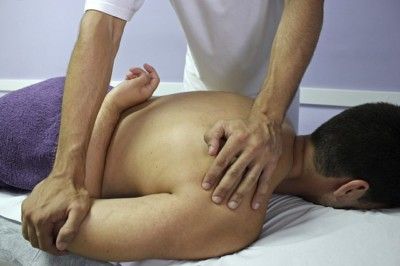Osteopathy Frankfurt: Only the best for your health!
You are looking for a good osteopath in Frankfurt? Then you are at Praxismedicus.de just right! The specialists for osteopathy Frankfurt take a lot of time for you and have already been able to provide countless patients with relief from various complaints.
What is osteopathy and what can it do?
Osteopathy is a form of alternative medicine that involves the physical manipulation of muscle tissue and bone. Osteopathic practitioners are called osteopaths. Its name is derived from the ancient Greek “bone” as well as from the term for “sensitive to” or “sensitive to”. “appealing to”.
According to science, there is evidence that osteopathy is effective for quite a few types of neck, shoulder or leg pain and recovery after hip or knee surgery. However, there is no firm evidence yet that osteopathy is effective as a treatment for health conditions unrelated to bones and muscles.
The so-called osteopathic manipulation is the core area of techniques in osteopathy. However, parts of osteopathy, such as cranial therapy, have no proven therapeutic value and are sometimes referred to as pseudoscience, although users repeatedly report very good results.
The techniques of osteopathy are based on an ideology of Andrew Taylor Still (1828-1917), who postulated the existence of a “myofascial continuity” – a layer of tissue that connects every part of the body to every other part.
Osteopaths try to diagnose and treat according to this basis. Disorders are called “somatic dysfunctions. Osteopathic techniques are most commonly used to treat back pain and other musculoskeletal problems.
Osteopathic medicine is ideally understood to be used in combination with pharmacotherapy, rehabilitation, surgery, patient education, nutrition and exercise to achieve maximum success.
Osteopathic techniques are not necessarily unique in this regard – other disciplines, such as physical therapy or chiropractic, use similar techniques.
Principles of osteopathy
An essential principle of osteopathy is that problems in the body’s anatomy can affect function. Another principle is the body’s innate ability to heal itself.
Many of the manipulative techniques of osteopathic medicine are aimed at reducing or eliminating the obstacles to proper structure and function so that the self-healing mechanism can assume its role in restoring a person to health.
The body is an integrated unit of mind, body and spirit
The body has self-regulating mechanisms that give it the ability to defend, repair and remodel itself. Structure and function are interrelated. Rational therapy is based on consideration of the first three principles.
These principles are not considered empirical laws by doctors of osteopathic medicine, but rather serve as the basis for the osteopathic approach to health and disease.
Muscle energy techniques treat somatic dysfunction through stretching and muscle contraction. For example, if a person is unable to fully extend their arm, the treating osteopath will lift the patient’s arm at the end of the patient’s range of motion – also referred to as the edge of the restrictive barrier.
The patient then tries to lower his arm while the doctor resists. This resistance to the patient’s movement allows the patient’s muscle to contract isometrically. As soon as the patient relaxes, the range of motion increases slightly.
Repetition of alternating cycles of contraction followed by relaxation helps the treated muscle improve its range of motion.
Muscle energy techniques are ideal for use in patients with fractures, accidental injuries, joint instability, severe muscle spasms or strains, severe osteoporosis, severe whiplash, vertebrobasilar insufficiency, and recent surgery.
